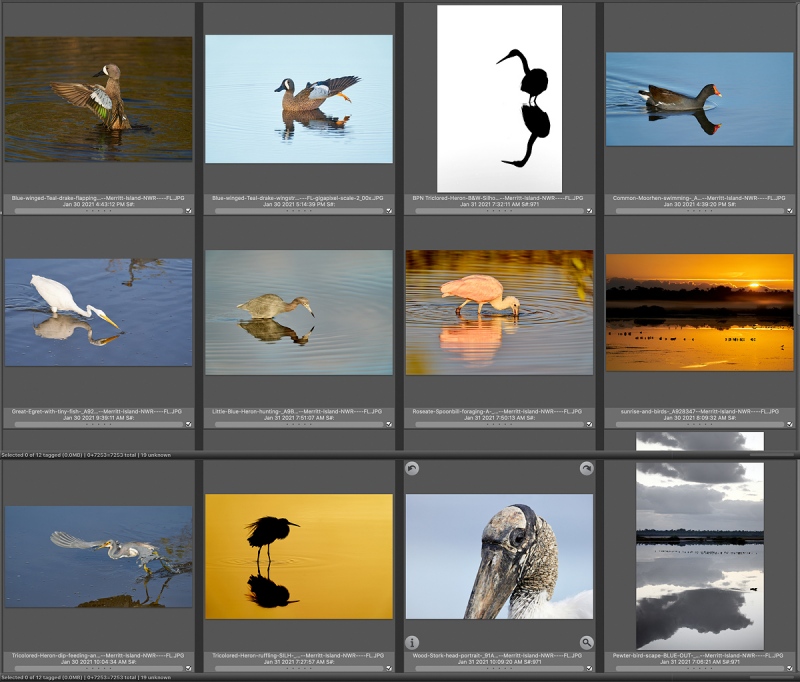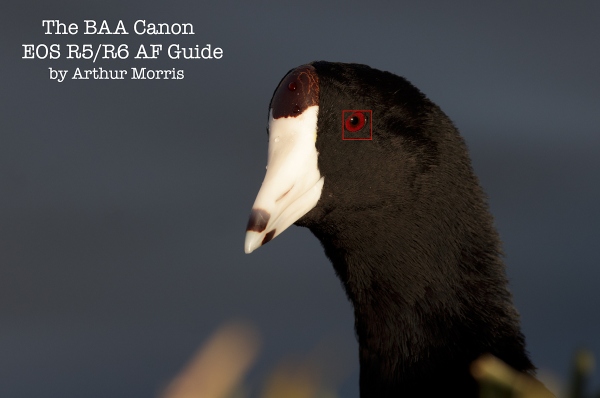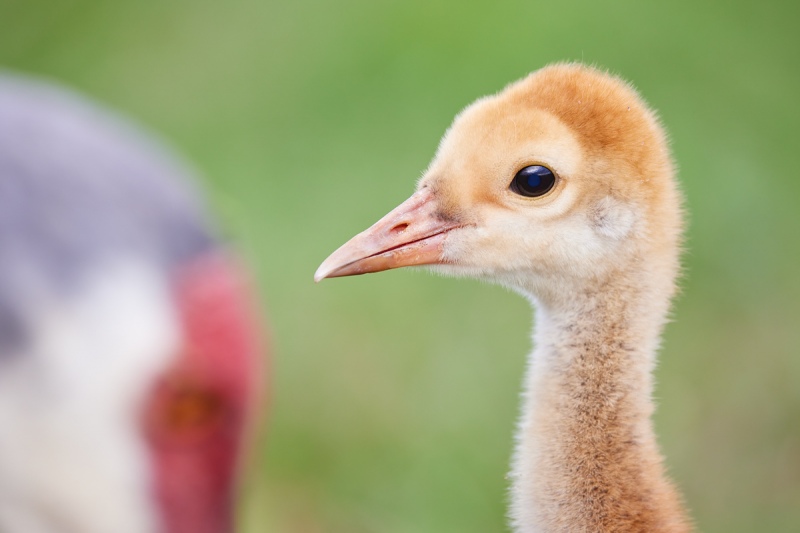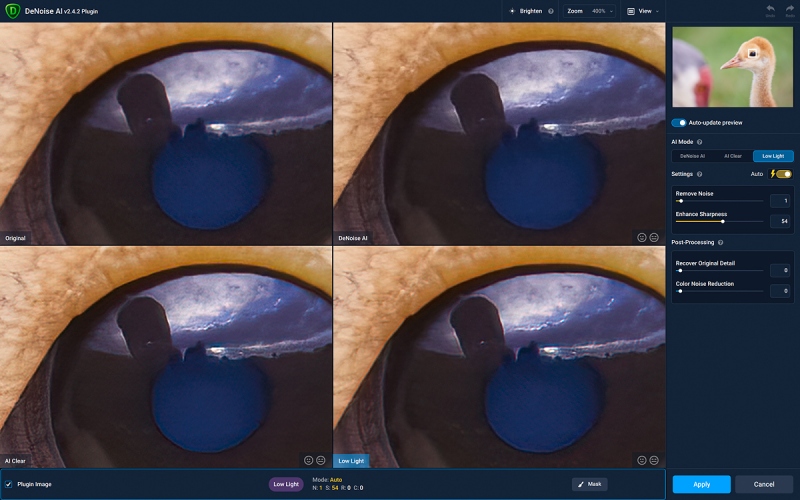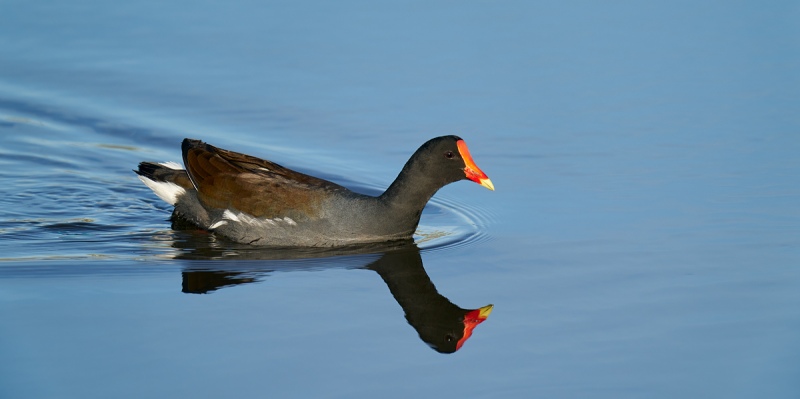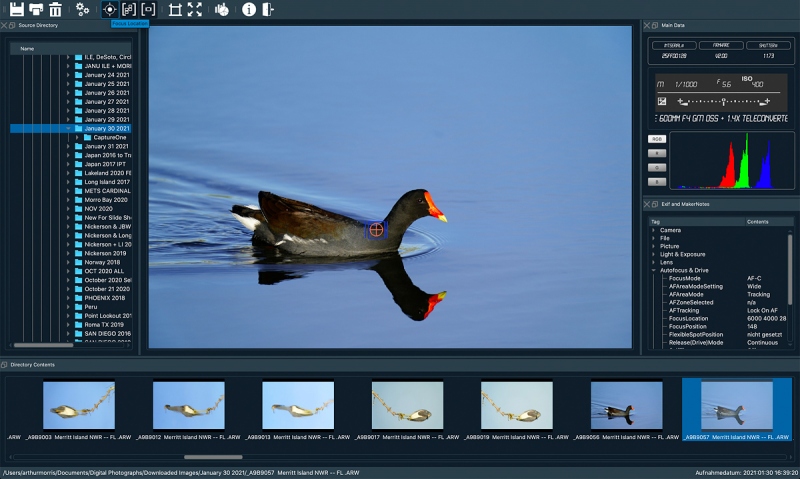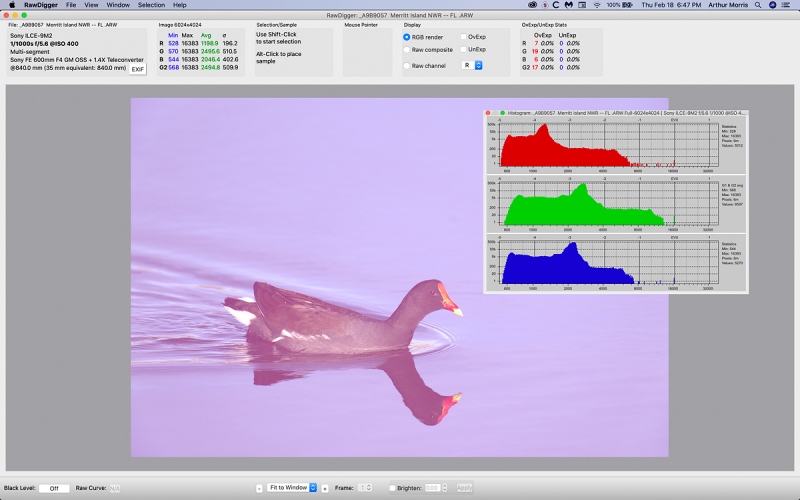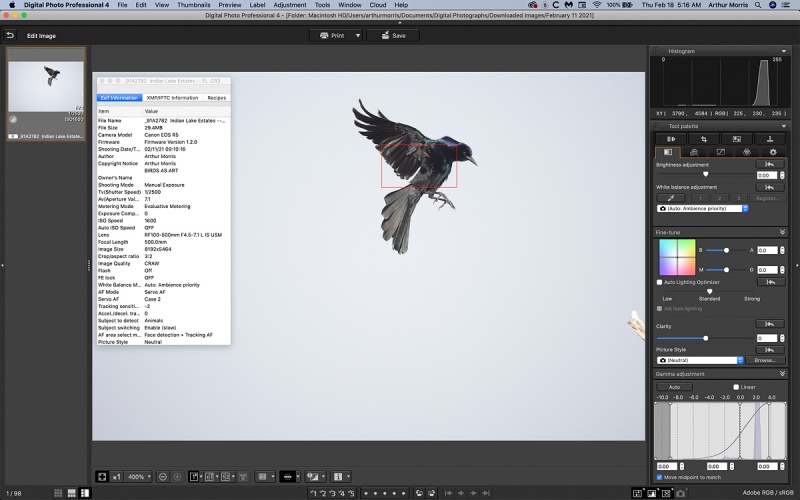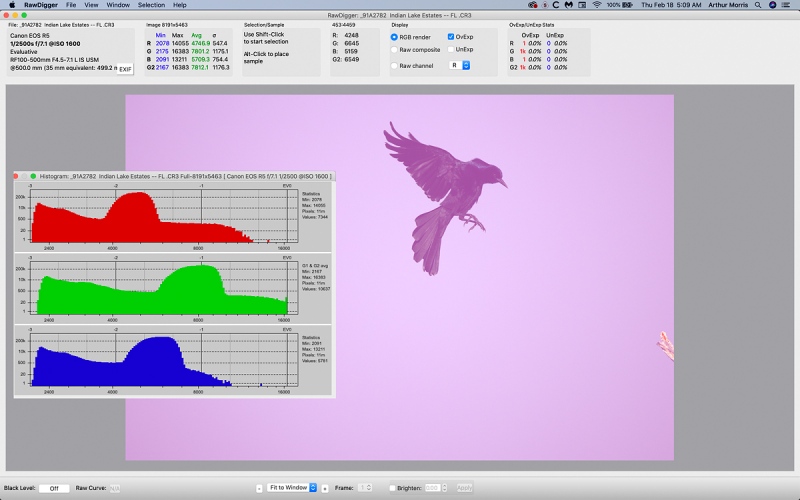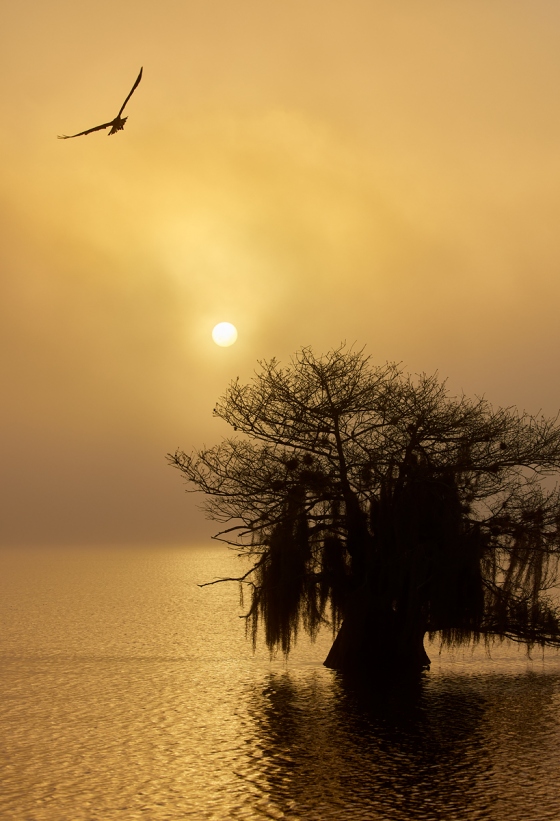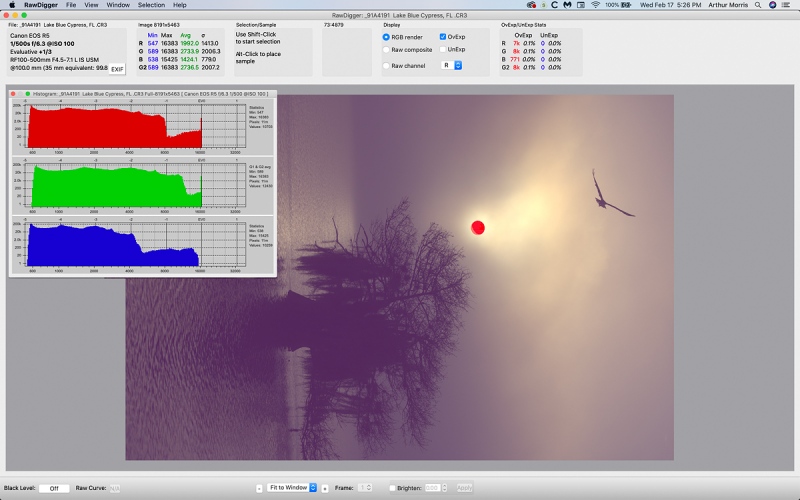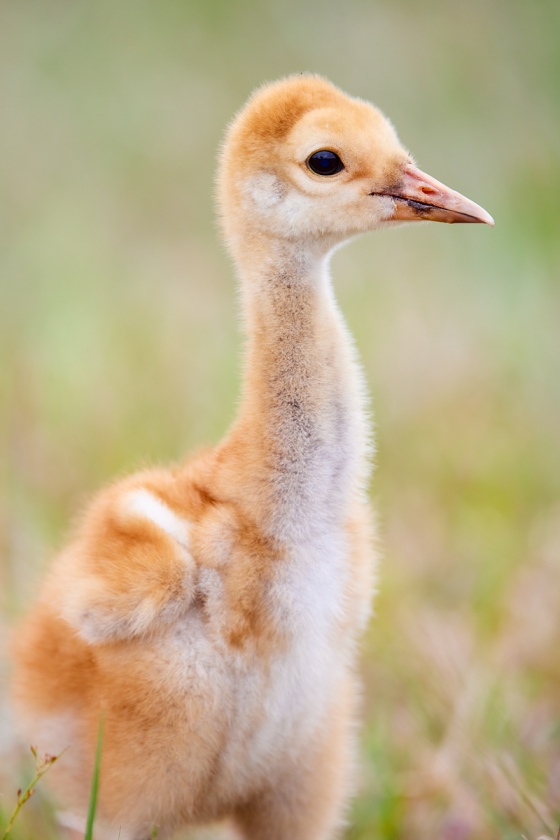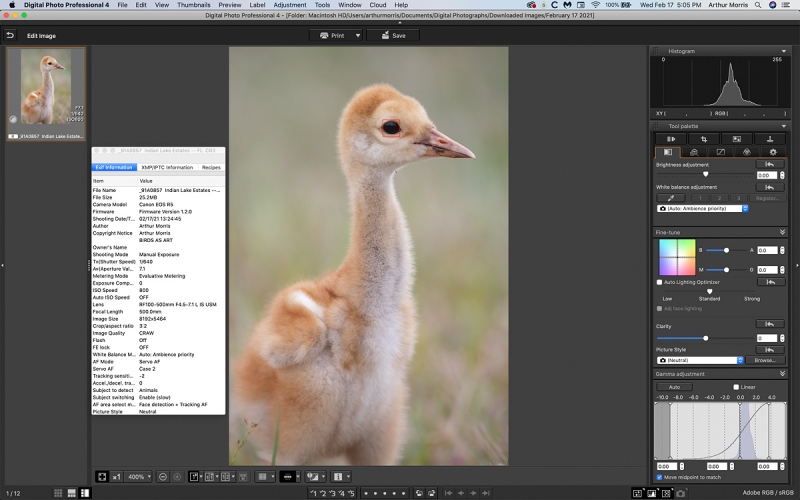Your Call?
Do you like the inclusion of the out-of-focus head of the adult crane in today’s image or would you prefer a straight head portrait. (I have several of those). If you leave a comment, please let us know why.
Come on Down
Again I am blessed with a ridiculously tame crane family. If you would like to join me for a morning or more to do some photography, please shoot me an e-mail to discuss a schedule and rates please contact me via e-mail. Lodging is available.
Wanted to Buy
If you have a Canon EF Extender 2X III that you would like to part with, please contact me via e-mail as I have an interested buyer.
|
|
|
All of the images (plus lots more) were created on a very short visit at the end of January. Click on the card to enjoy a larger version. Merritt Island NWR IPT card |
Merritt Island NWR IPT
Merritt Island NWR IPT. 3 1/2 DAYS. MON 15 MAR thru the morning session on THURS 18 MAR 2021. $1499 includes three lunches. Limit: 6. Openings: 5.
When I visited — and later lived — in Deltona, FL, I made many trips to Black Point Wildlife Drive and environs. On a recent visit, I did quite well. The birds were much tamer than I remembered. I know the place well. Early spring was always best. There are tons of ducks, and wading birds including and especially both ibises. It can be great at sunrise with large flocks of shorebirds, waterfowl, ibises, and American White Pelicans filling the skies. We should get to do lots of flight photography on the causeway. At least a few good chances with Roseate Spoonbill are possible.
A $499 deposit is required to hold your spot for this IPT. You can send a check (made out to “BIRDS AS ART) to us here: BIRDS AS ART, PO Box 7245, Indian Lake Estates, FL, 3385, or call Jim or Jennifer at the office with a credit card at 863-692-0906. Your balance, payable only by check, is due immediately after you sign up. If you have any questions, please feel free to contact me via e-mail. If you cancel due to COVID 19 concerns, all of your payments will be refunded.
What’s Up?
After photographing the chicks for a few minutes on Friday morning, I put out a very stinky armadillo and did well with the vultures. The weather was changing every ten minutes yesterday afternoon so I was hoping for a sunset. Instead we had another in a long string of grey-sets.
It is 6:21am on the morning of Saturday 20 February 2021. I am hoping to be in my SUV by 6:40am to head over to Lakeland to check out the American White Pelicans.
I got a ton of great work done on the R5 Camera User’s e-Guide. But I still have lots more hard work and research to do and will be doing some more of that today.
This post took well about one two hour to prepare and makes sixty-two days in a row with a new one. Please remember …
Please Remember
With income from IPTs now at zero, please, if you enjoy and learn from the blog, remember to use one of my two affiliate programs when purchasing new gear. Doing so just might make it possible for me to avoid having to try to get a job as a Walmart greeter and will not cost you a single penny more. And if you use Bedfords and remember to enter the BIRDSASART code at checkout, you will save 3% on every order and enjoy free second-day air shipping. In these crazy times — I am out at least forty to sixty thousand dollars so far due to COVID 19 (with lots more to come) — remembering to use my B&H link or to shop at Bedfords will help me out a ton and be greatly appreciated. Overseas folks who cannot order from the US because of import fees, duties, and taxes, are invited to help out by clicking here to leave a blog thank you gift if they see fit.
Canon R5/R6 AF e-Guide Info
So far, more than 122 folks have sent PayPals for their copy of the Canon R5/R6 AF e-Guide. And 41 who used my affiliate links to purchase their Canon mirrorless gear have e-mailed for and received their free copy of the guide. If you e-mailed your Bedford receipt or sent a PayPal and did not receive your guide, please LMK immediately via e-mail.
Feedback on the guide continues to be overwhelmingly positive. Please scroll down to read about the BAA Canon EOS R5/R6 User’s e-Guide. Note that the info in the BAA Canon R5/R6 Autofocus e-Guide is so important that I opted to publish the AF guide immediately as the R5/R6 User’s Guide will still take about another week or two to complete.
|
|
BAA Canon R5/R6 Autofocus e-Guide |
BAA Canon R5/R6 Autofocus e-Guide is Now Complete!
Forty-one pages. 6250 words. 50-DPP4 screen captures showing the R5’s vaunted AF system in action. Note: the AF system of the R5 is identical to the AF system of the R6.
You will learn:
1- The two most useful AF Methods for general bird photography and for birds in flight and the AF method that works best for me for birds in flight.
2- How to set up your R5/R6 AF Menus.
3- What boxes to check (and un-check) under Limit AF Methods.
4- How to change the AF Method quickly, easily, and efficiently. Note: the default way of doing this is clunky, cumbersome, and inefficient at best. One person replied that this tip alone was worth the price of admission.
5- The only setting that should be used for Initial Servo AF pt for Face Detection + Tracking.
I you are currently using multiple back buttons either for general bird photography or for birds in flight, what you learn in this guide will change your life. For the better.
Here are the first three paragraphs of this e-Guide:
From the moment I learned about the new Canon mirrorless bodies, I read about using two or three back-buttons to focus using different AF methods. The word on the street said that the way to go for birds in flight was to use one button to acquire focus with Zone AF or with Large Zone: Horizontal AF and then switch to another button to activate Face Detection + Tracking AF and then use the shutter button to make an image. My immediate thought was, “This is insanity! There has got to be a better way.” In short, there is a far superior way to set up AF on your R5 or R6.
Remember that I got away from any form of back-button or rear focusing many years ago after finally realizing that it is always easier to do one thing (press the shutter button), than it is to do two things (press a back button and then press the shutter button).
The default method of switching AF Methods with the R5/R6 bodies is cumbersome at best. It involves first pressing the grid button (my name) on the upper right back of the camera and then pressing the hard-to-access M-Fn button to toggle through the AF Methods. This method is so bad that it will not be mentioned again in this guide.
The guide is free to all who have ordered an R5 or an R6 using my B&H affiliate link or from Steve Elkins/Bedfords using the BIRDSASART coupon code at checkout. Please send your receipt to me via e-mail. It will take me a few days to a week to verify the B&H purchases. Bedfords folks should expect their free e-Guides fairly quickly.
To purchase your copy of the e-Guide, please click here or send a PayPal for $25.00 to birdsasart@verizon.net and be sure to include the words R5/R6 AF Guide in your PayPal e-mail.
Everyone who purchased the AF guide will receive their free update some time today.
Canon EOS R5 Camera User’s e-Guide
As most of you know, I have been working on a complete BAA Canon EOS R5 Camera User’s e-Guide. Because the camera and the Menus are so complex, this has required a lot of research, a lot of time, and a lot of effort (and will continue to do so until it is complete. It should be finished by late February. As always, folks who use the BAA affiliate links to purchase their Canon gear will receive a substantial discount. The final update of the R5/R6 AF e-guide will become part of the complete Camera User’s e-Guide but will be improved as and if warranted.
Great Topaz News!
Folks who use the BAA Topaz link to purchase Sharpen AI, DeNoise AI, or the Utility Bundle (or any other Topaz plug-ins) will receive a 15% discount by entering the ARTHUR15 code at checkout. If the stuff is on sale (as it usually is), you save 15% off of the sale price! To get the discount you must use my link and you must enter the discount code. Be sure to start with this link.
Those who purchase Sharpen AI, DeNoise AI, or any other Topaz plug-ins using my link and then entering the ARTHUR15 code at checkout can e-mail to request a short Getting Started with Topaz e-Guide. Please include a copy of your Topaz receipt that shows the discount. Aside from the basics, the guide explains how to install the plug-ins so that they appear in the Photoshop Filter Menu.
New and Better Bedfords Discount Policy!
You can now save 3% on all of your Bedfords photo gear purchases by entering the BIRDSASART coupon code at checkout. Your discount will be applied to your pre-tax total. In addition, by using the code you will get 2nd day air shipping via Fed Ex.
Grab a Nikon AF-S Teleconverter TC-14E III and save $14.99. Purchase a Canon EOS R5 and your discount will be $116.97. Purchase a Sony FE 600mm f/4 GM OSS lens and save a remarkable $389.94! Your Bedford’s purchase no longer needs to be greater than $1,000.00 for you to receive a discount. The more you spend, the more you save.
Money Saving Reminder
Many have learned that if you need a hot photo item that is out of stock at B&H and would enjoy free second-day air shipping, your best bet is to click here, place an order with Bedfords, and enter the coupon code BIRDSASART at checkout. If an item is out of stock, contact Steve Elkins via e-mail or on his cell phone at (479) 381-2592 (Central time). Be sure to mention the BIRDSASART coupon code and use it for your online order to save 3% and enjoy free 2nd-day air shipping. Steve has been great at getting folks the hot items that are out of stock at B&H and everywhere else. The wait lists at the big stores can be a year or longer for the hard to get items. Steve will surely get you your gear long before that. For the past year, he has been helping BAA Blog folks get their hands on items like the SONY a9 ii, the SONY 200-600 G OSS lens, the Canon EOS R5, the Canon RF 100-500mm lens, and the Nikon 500mm PF. Steve is personable, helpful, and eager to please.


Gear Questions and Advice
Too many folks attending BAA IPTs (remember those?) and dozens of photographers whom I see in the field and on BPN, are–out of ignorance–using the wrong gear especially when it comes to tripods and more especially, tripod heads… Please know that I am always glad to answer your gear questions via e-mail. Those questions might deal with systems, camera bodies, accessories, and/or lens choices and decisions.
|
|
|
This image was created on 19 February 2021 down by the lake near my home in ILE. Sitting on the North Field, I used the handheld Canon RF 100-500mm f/4.5-7.1L IS USM lens (at 500mm) and the highly touted 45MP Canon EOS R5 Mirrorless Digital camera body. ISO 1000. Exposure determined via test image/histogram evaluation: 1/320 sec. at f/7.1 (wide open) in Manual mode. RawDigger showed this one to be less than 1/6- stop under-exposed. I am learning. AWB at 8:05am on a very cloudy morning. Face detection + Tracking performed perfectly by nailing and tracking the bird’s eye. Image #3: Sandhill Crane chick juxtaposed with the adult |
Inspired By Jon Pearson
In 2019 I was privileged to meet and hang out with skilled and creative photojournalist Jon Pearson on the beach at Morro Bay. We exchanged a few e-mails and images. I studied his work here. Jon is the Director of Creativity at QLI in Omaha, Nebraska, where he’s been employed since 1996. QLI is the nation’s premier provider of rehabilitation and residential services for younger adults with brain and spinal cord injury. I contacted him last year as I would like to do a blog post featuring his work. Most inspiring for me is his creative vision and the use of unique juxtapositions that inspired today’s featured image. John responded to my request by saying that he was too busy at QLI (as a result of COIVD-19) to work with me on a feature (God bless him) but that he would be glad to help out when things got back to normal.
|
|
Image #3: Topaz DeNoise Comparative View at 400% |
Topaz DeNoise Tip
Here I magnified the image to 400% to help to see the minimal noise in this image. Noise is often most obvious in the pupil of a bird’s eye. And yes, the crane chicks have bluish pupils. I went with Low Light by a slim margin.
Typos
In all blog posts and Bulletins, feel free to e-mail or to leave a comment regarding any typos or errors.

